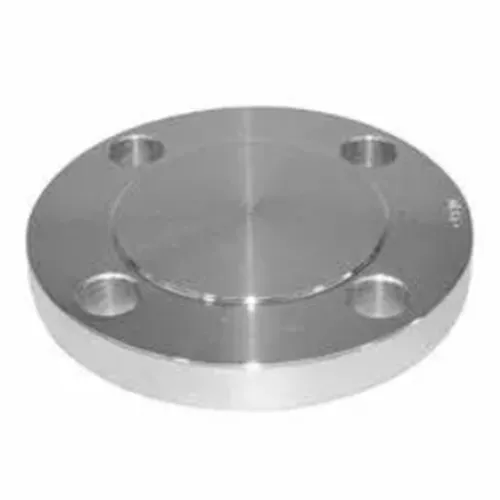-
Cangzhou Yulong Steel Co., Ltd.
-
Phone:
+86 13303177267 -
Email:
admin@ylsteelfittings.com
- English
- Arabic
- Italian
- Spanish
- Portuguese
- German
- kazakh
- Persian
- Greek
- French
- Russian
- Polish
- Thai
- Indonesian
- Vietnamese
- Zulu
- Korean
- Uzbek
- Hindi
- Serbian
- Malay
- Ukrainian
- Gujarati
- Haitian Creole
- hausa
- hawaiian
- Hebrew
- Miao
- Hungarian
- Icelandic
- igbo
- irish
- Japanese
- Javanese
- Kannada
- Khmer
- Rwandese
- Afrikaans
- Albanian
- Amharic
- Armenian
- Azerbaijani
- Basque
- Belarusian
- Bengali
- Bosnian
- Bulgarian
- Catalan
- Cebuano
- China
- China (Taiwan)
- Corsican
- Croatian
- Czech
- Danish
- Esperanto
- Estonian
- Finnish
- Frisian
- Galician
- Georgian
- Kurdish
- Kyrgyz
- Lao
- Latin
- Latvian
- Lithuanian
- Luxembourgish
- Macedonian
- Malgashi
- Malayalam
- Maltese
- Maori
- Marathi
- Mongolian
- Myanmar
- Nepali
- Norwegian
- Norwegian
- Occitan
- Pashto
- Dutch
- Punjabi
- Romanian
- Samoan
- Scottish Gaelic
- Sesotho
- Shona
- Sindhi
- Sinhala
- Slovak
- Slovenian
- Somali
- Sundanese
- Swahili
- Swedish
- Tagalog
- Tajik
- Tamil
- Tatar
- Telugu
- Turkish
- Turkmen
- Urdu
- Uighur
- Welsh
- Bantu
- Yiddish
- Yoruba

Oct . 15, 2024 03:53 Back to list
Specifications and Applications of ASTM A333 Grade 6 Low-Temperature Pipe Steel
Understanding ASTM A333 Gr. 6 A Comprehensive Overview
ASTM A333 is a specification established by the American Society for Testing and Materials (ASTM) that covers several grades of seamless and welded steel pipes for low-temperature service. Among these grades, Gr. 6 is particularly noteworthy for its application in various industries where substances are transported at low temperatures. In this article, we will delve into the specifics of ASTM A333 Gr. 6, its properties, applications, and importance in engineering and construction.
Material Composition and Properties
ASTM A333 Gr. 6 is primarily composed of carbon steel with varying percentages of alloying elements. The nominal composition of this grade includes carbon (maximum 0.30%), manganese (0.70 to 1.20%), phosphorus (maximum 0.025%), and sulfur (maximum 0.025%). This careful balance of elements endows the steel with excellent toughness and ductility, making it suitable for low-temperature applications.
One of the defining characteristics of ASTM A333 Gr. 6 is its ability to maintain strength and toughness at cryogenic temperatures, down to -100°F (-73°C) or lower. Its yield strength typically ranges around 35,000 psi (240 MPa), while the tensile strength can reach up to 70,000 psi (480 MPa). Such mechanical properties are vital for ensuring the structural integrity and safety of pipelines and pressure vessels in cold environments.
Manufacturing Processes
The manufacturing of ASTM A333 Gr. 6 pipes can be accomplished through both seamless and welded processes. Seamless pipes are produced by piercing a solid round billet, resulting in a pipe that is forged to shape, whereas welded pipes are created by rolling flat steel into a cylindrical shape and joining the edges together. Each method has its advantages, but seamless pipes are typically preferred for low-temperature applications due to their uniformity and higher resistance to defects.
In addition to the primary manufacturing processes, rigorous testing is conducted to ensure compliance with ASTM standards. Non-destructive testing, including ultrasonic testing and radiographic examination, is commonly performed to detect any internal or surface flaws. This quality assurance is crucial, given the extreme operating conditions these materials may face.
astm a333 gr 6

Applications of ASTM A333 Gr. 6
ASTM A333 Gr. 6 is predominantly utilized in the manufacture of pipelines for transporting natural gas, liquefied gases, petroleum products, and other fluids that require low-temperature handling. Its ability to withstand thermal contraction and prevent brittle fracture makes it an ideal choice for industries such as petrochemical, nuclear, and offshore oil and gas extraction.
Moreover, the aerospace sector has also seen a demand for ASTM A333 Gr. 6 materials, particularly in the context of cryogenic applications, where materials are exposed to extreme cold during the operation of liquid oxygen and liquid nitrogen systems. The versatility of this grading also extends to HVAC systems, power generation, and food processing industries, where low-temperature transport is essential.
Importance of Standards and Compliance
The significance of ASTM A333 Gr. 6 cannot be overstated. Compliance with these standards ensures that the materials used in critical applications will perform reliably and safely under specified conditions. The ASTM standard not only provides guidelines for material specifications but also incorporates testing methods to evaluate mechanical properties, aiding manufacturers and engineers in selecting the right materials for their projects.
In an increasingly regulated environment, adherence to ASTM standards is crucial for minimizing risks associated with material failures, which can lead to catastrophic accidents. It ensures that all engineering practices maintain high safety levels, thus protecting both personnel and the environment.
Conclusion
In summary, ASTM A333 Gr. 6 is a vital material for low-temperature applications in various industries. Its exceptional mechanical properties, combined with strict manufacturing and testing protocols, make it an integral component for safe and efficient operations. As industries continue to expand into extreme conditions, the relevance of ASTM A333 Gr. 6 remains strong, offering reliable solutions for modern engineering challenges. Whether in energy, aerospace, or manufacturing, understanding and utilizing ASTM A333 Gr. 6 is essential for delivering quality and safety in today's demanding environments.
Latest news
-
ANSI 150P SS304 SO FLANGE
NewsFeb.14,2025
-
ASTM A333GR6 STEEL PIPE
NewsJan.20,2025
-
ANSI B16.5 WELDING NECK FLANGE
NewsJan.15,2026
-
ANSI B16.5 SLIP-ON FLANGE
NewsApr.19,2024
-
SABS 1123 FLANGE
NewsJan.15,2025
-
DIN86044 PLATE FLANGE
NewsApr.19,2024
-
DIN2527 BLIND FLANGE
NewsApr.12,2024
-
JIS B2311 Butt-Welding Fittings LR/SR 45°/90° /180°Seamless/Weld
NewsApr.23,2024











